Evans Imboma was attached to Mara Elephant Project through our core funder the ESCAPE Foundation. He was one of the mabingwa’s featured in their film MABINGWA/The Champions. Evans is an active conservationist who grew up on the edge of the Kakamega Forest in Kenya. Evans was given the opportunity to intern at MEP for six months before he starts studying for a degree in Natural Resource Management in August. Evans’ main task is to be in the field for one month at a time with all six of MEP’s patrol teams learning from the rangers.
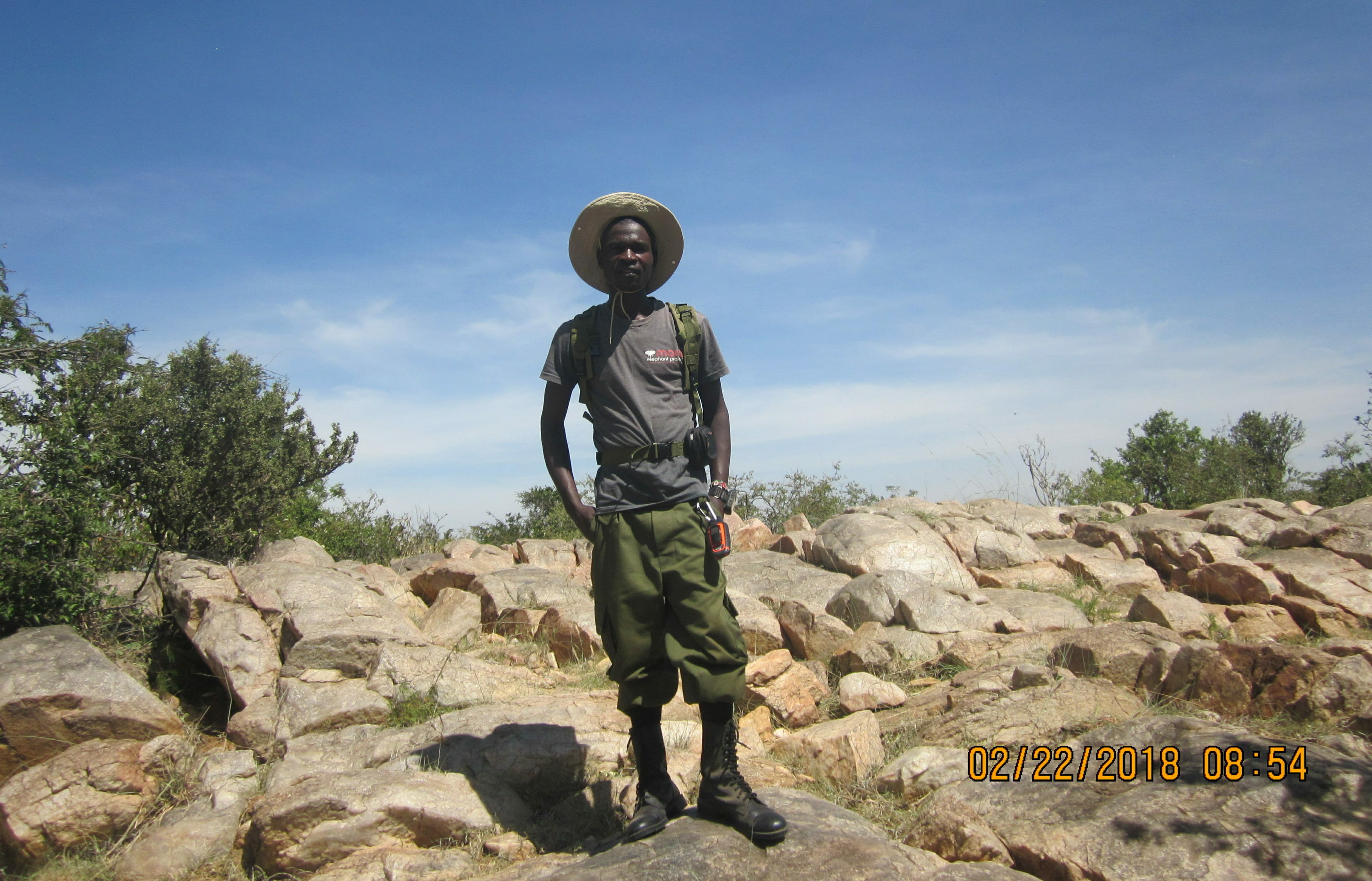 Evans pictured out in the field.
Evans pictured out in the field.
 While in the field MEP rangers have two forms that they fill out when specifically assigned to an area with high levels of human-elephant conflict. One is an incident report and the other is a human-elephant conflict response report. Both of these reports are essential for data collection so that MEP can not only respond better to human-elephant conflict in the area next time, but also share the information with other organizations and the government to help inform spatial planning and keep both communities and elephants safe. So far, Evans has been trained by MEP staff on how to properly fill out these forms and on how to use the WILD app to record patrol data. (pictured left: Evans with a MEP ranger in the field.)
While in the field MEP rangers have two forms that they fill out when specifically assigned to an area with high levels of human-elephant conflict. One is an incident report and the other is a human-elephant conflict response report. Both of these reports are essential for data collection so that MEP can not only respond better to human-elephant conflict in the area next time, but also share the information with other organizations and the government to help inform spatial planning and keep both communities and elephants safe. So far, Evans has been trained by MEP staff on how to properly fill out these forms and on how to use the WILD app to record patrol data. (pictured left: Evans with a MEP ranger in the field.)
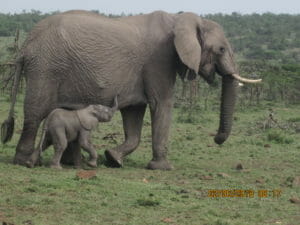
Evans also learned from MEP rangers about tracking elephants and conducting identification work which includes, condition, injuries, photographic evidence, herd size, and herd demographics. (pictured right: Collared elephant Chelsea.)
Evans was tasked with recording all of these elephant sightings in the WILD app and during his time in the field, the MEP ranger team was able to visit and record large herds in the Ol Kinyei Conservancy including collared elephants (Limo, Chelsea and Kiambi).
 MEP collared elephant Kiambi photographed in the field by Evans.
MEP collared elephant Kiambi photographed in the field by Evans.
Evans will be going through basic training in April, which will be a critical step for him to gain perspective on the MEP ranger experience and in addition Evans will be spending the next few months with the rest of the MEP ranger units. Alongwith his duties as an intern, we’ve tasked him to write a blog monthly for MEP so that our supporters will get a better view into the lives of our rangers while out in the field. Here is Evans’ March report.
The New Year Rains
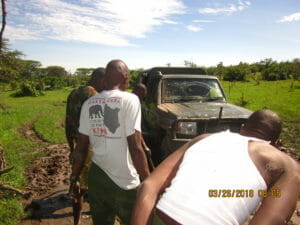 The 2018 rains started a little bit earlier than usual. It was a great blessing to those who used it wisely by following the metrological department’s advice. Most bridges turned into a mess with more water density that grew to great heights and resulted in massive floods. The flood swept away pedestrians, motorists, and even a camp. Thumbs up to the MEP rangers who were organized and ready for the rainy season and because of this they did not have any tragedy to report caused by the flooding. Below is my observation on how both the wildlife and MEP rangers responded to the heavy rainy season. (pictured left: a MEP vehicle stuck in the mud with rangers working to free it.)
The 2018 rains started a little bit earlier than usual. It was a great blessing to those who used it wisely by following the metrological department’s advice. Most bridges turned into a mess with more water density that grew to great heights and resulted in massive floods. The flood swept away pedestrians, motorists, and even a camp. Thumbs up to the MEP rangers who were organized and ready for the rainy season and because of this they did not have any tragedy to report caused by the flooding. Below is my observation on how both the wildlife and MEP rangers responded to the heavy rainy season. (pictured left: a MEP vehicle stuck in the mud with rangers working to free it.)
 MEP rangers using the rain water to their advantage to wash up after a muddy task.
MEP rangers using the rain water to their advantage to wash up after a muddy task.
MEP TEAM:
The rangers spent most of their time in the forest monitoring our key species, elephants, Loxodonta africana. The rangers all have a wide knowledge of primary information about wildlife, flora and fauna of the area including animal behavior and medicinal plants. In order to stay safe in the forests throughout the rainy season, the rangers put a lot of consideration into a number of these factors when choosing a safe camp site location. For example, when setting up camp, the tents are all pitched on elevated areas to avoid being submerged in water.
 Evans in a tent at camp.
Evans in a tent at camp.
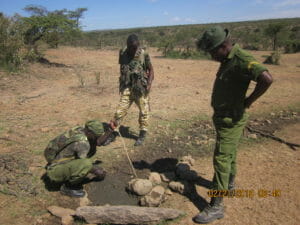
One of the key factors when choosing a good camp site is the presence of elephants. A camp site should be close to elephants since it’s MEP’s key species to protect. We needed to select places that were accessible and allowed us to respond quickly to the communities in case of human-elephant conflict. When human-elephant conflict cases are reported to the office through the MEP hotline, the office will then send coordinates to the rangers who are nearby to navigate to the location of conflict and aid in solving the situation. (pictured left: MEP rangers out on patrol.)
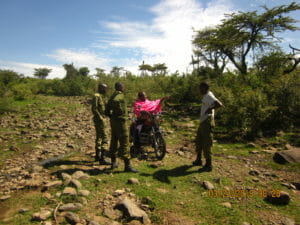
MEP rangers depend on the community to do their job. We rely on information from them for successful operations. The picture below illustrates this point in a very simply way, in it MEP rangers are enquiring from the locals if the roads are reliable. It’s simple communication like this that ensures successful MEP operations. (pictured right: MEP rangers talking to a community member.)
WILDLIFE:
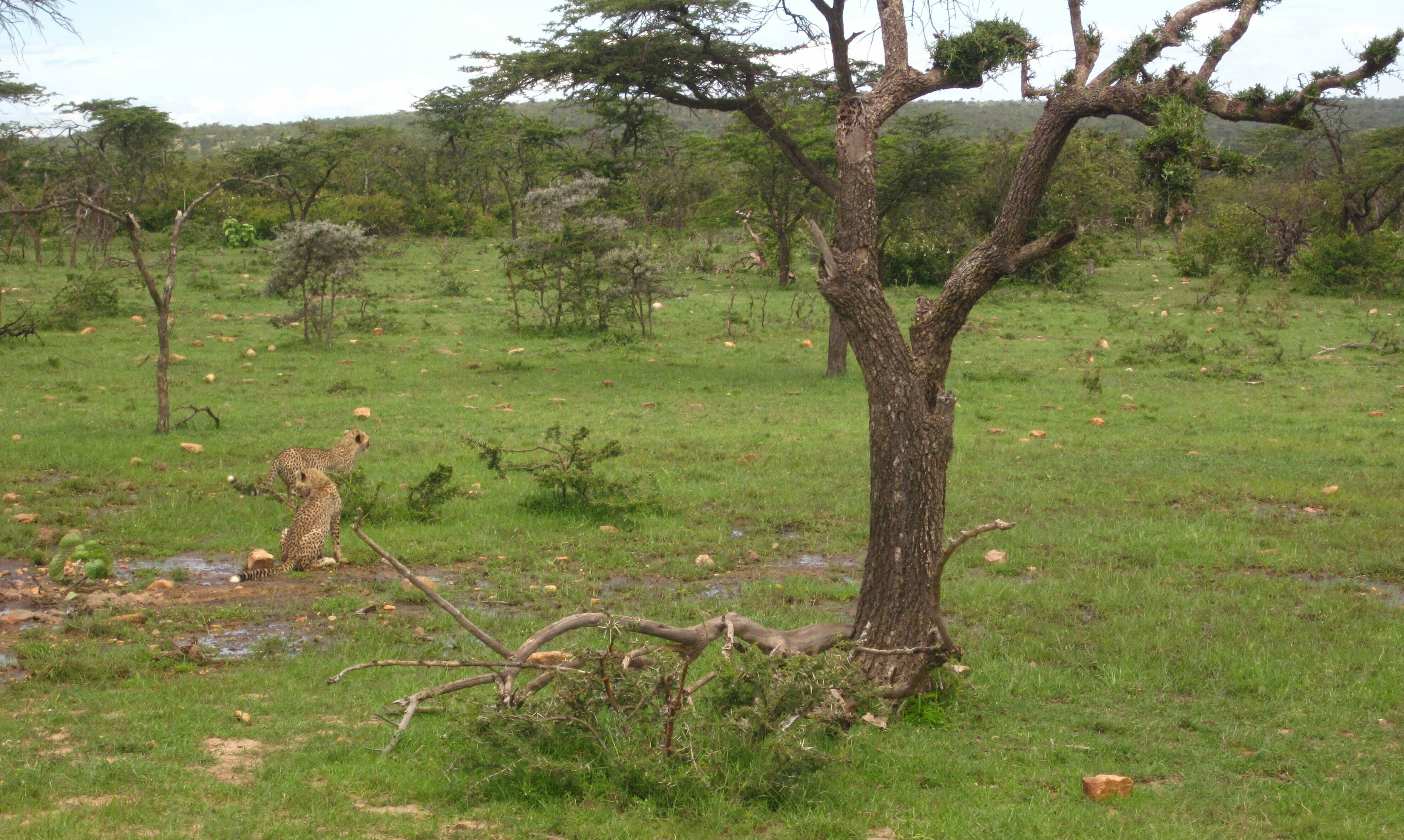 Cheetahs pictured in the green Mara grass.
Cheetahs pictured in the green Mara grass.
It was interesting to observe how wildlife reacts to the rainy season while I was in the field. What I noticed was that most wild animals including elephants, giraffes and ostriches avoid being submerged in waters with their young ones by moving to elevated areas. Contrastingly, wildebeests and gazelles stayed in large groups in the savannahs since there was plenty of green grass brought by the rains, which gave lions an easy job. The lions were able to easily catch their prey due to the large accumulation of prey all in the same place. I noticed that the lions would usually go for a healthy adult animal, which would leave the orphaned calves vulnerable to hyenas and cheetahs.
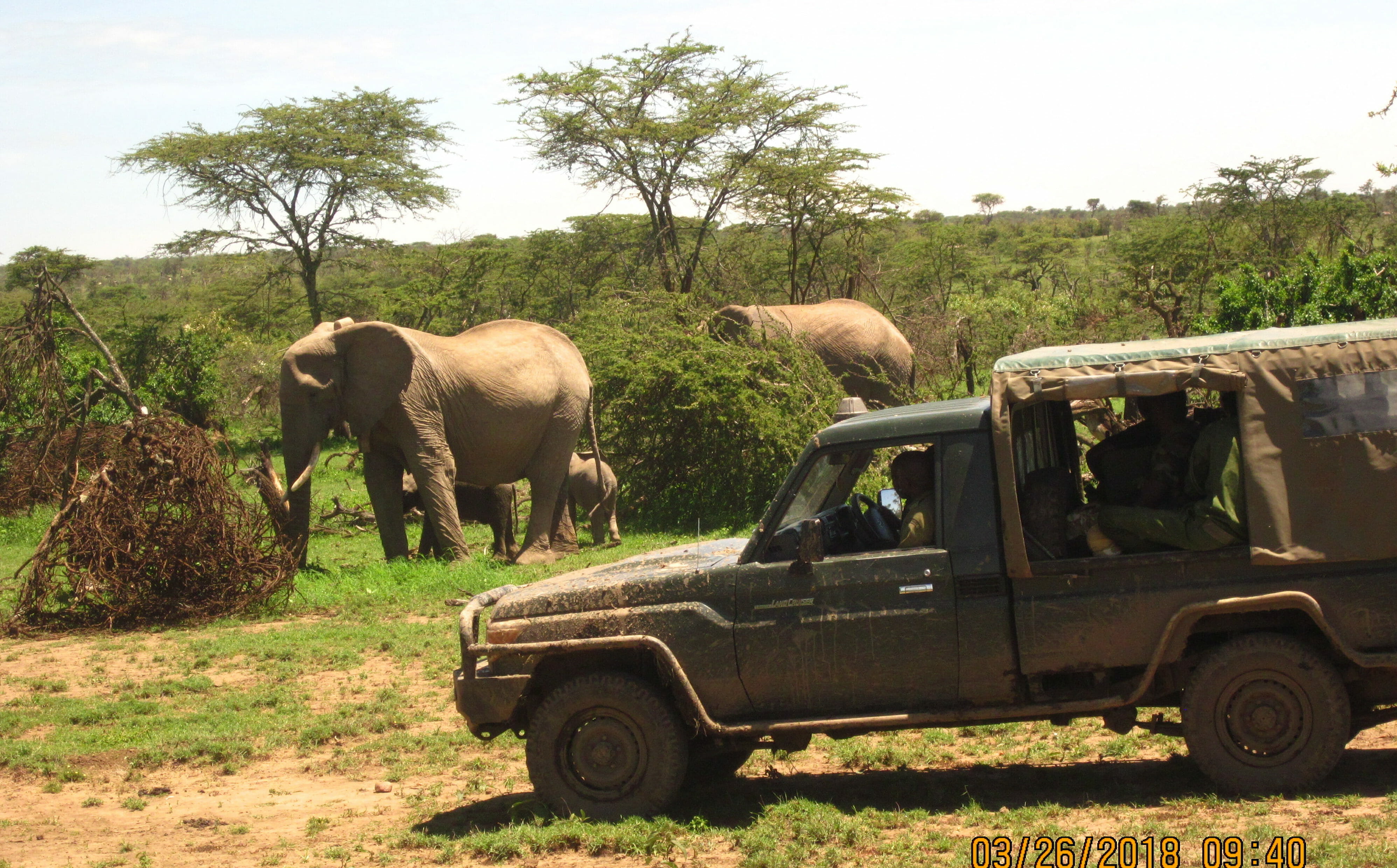 Collared elephant Chelsea being observed by MEP rangers in a vehicle while out on patrol.
Collared elephant Chelsea being observed by MEP rangers in a vehicle while out on patrol.


